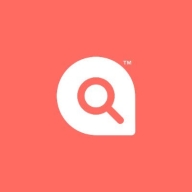

SAP Data Hub and MANTA Flow are products in the data management market. MANTA Flow seems to have the upper hand due to its comprehensive features and perceived value despite higher initial costs.
Features: SAP Data Hub provides robust data integration and orchestration capabilities, making it suited for complex data environments. It ensures smooth data flow and offers tools for efficient management of varied data sources. MANTA Flow specializes in data lineage, offering deep insights into data dependencies. It provides precise impact analysis and specialized tools beneficial for advanced data management needs.
Ease of Deployment and Customer Service: SAP Data Hub is known for a faster deployment process but often requires significant support. Its customer service is praised, ensuring effective issue resolution. MANTA Flow's deployment is more complex due to necessary configurations but receives high marks for its dedicated support team, which is responsive and thorough in assisting users.
Pricing and ROI: SAP Data Hub offers flexible pricing options, attracting businesses looking for cost-effective solutions. It typically provides a positive ROI through efficient long-term operation. MANTA Flow has a higher initial cost but offers significant long-term savings through enhanced data management, resulting in substantial ROI for data-driven companies.

Data Lineage Done Right
MANTA’s unified lineage platform maps all information flows to give you a complete overview of your data pipeline. Save money on manual labor by automating data lineage discovery; keep your data pipeline healthy by preventing data incidents; and migrate painlessly to the cloud.
The SAP® Data Hub solution enables sophisticated data operations management. It gives you the capability and flexibility to connect enterprise data and Big Data and gain a deep understanding of data and information processes across sources and systems throughout the distributed landscape. The unified solution provides visibility and control into data opportunities, integrating cloud and on-premise information and driving data agility and business value. Distributed processing power enables greater speed and efficiency.
We monitor all Data Governance reviews to prevent fraudulent reviews and keep review quality high. We do not post reviews by company employees or direct competitors. We validate each review for authenticity via cross-reference with LinkedIn, and personal follow-up with the reviewer when necessary.